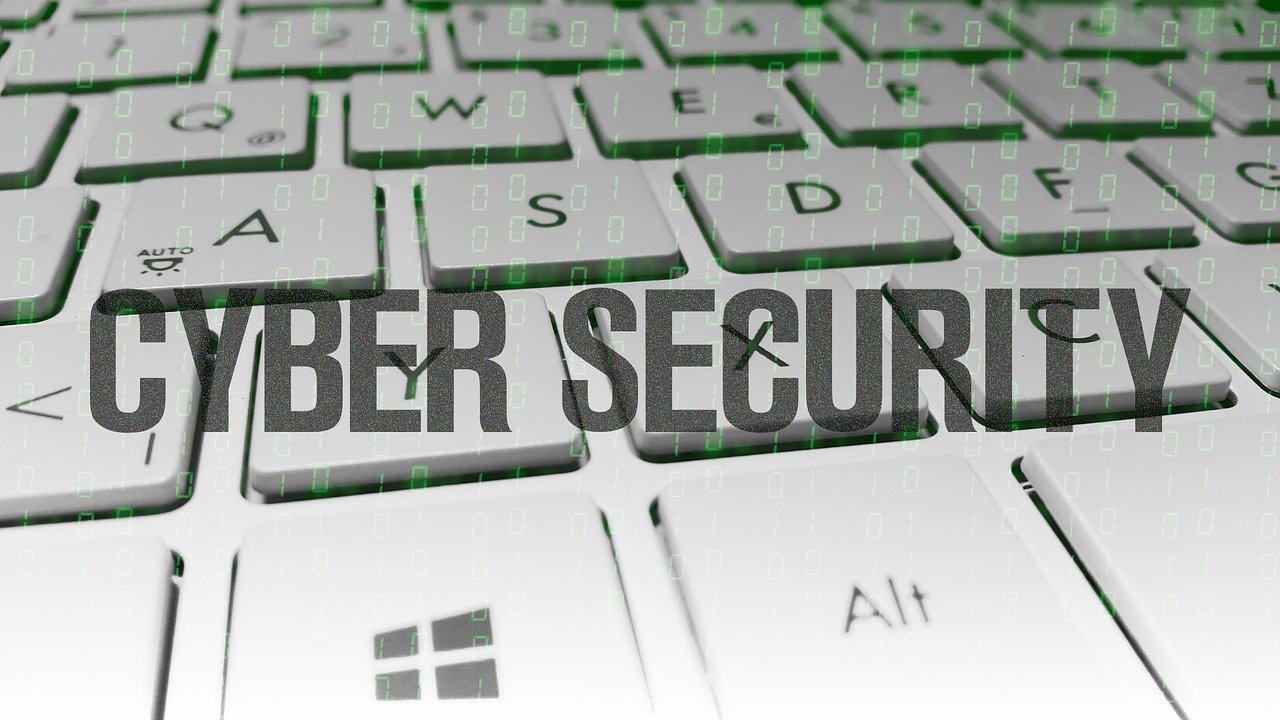What is cyber security?
Cyber security is a term that’s used to refer to the state of safety of devices. Examples of devices include computers, laptops, mobile phones and systems or networks and databases (Kaspersky, 2020). Because technology is evolving so rapidly, and everything is more connected over time, malicious attacks also target IoT (Internet of Things) devices.
Cyber security can be broken down into the following categories, according to Kaspersky (2020):
- Network security: securing a computer network
- Application security: keeping software and devices free of threats.
- Information security: protecting the integrity and privacy of data in storage and in transit.
- Operational security: processes and decisions for handling and protecting data assets.
What’s an IoT device, and is it vulnerable to cyber attacks?
Smart meters are good examples of IoT devices. These can be used to measure how much electricity each appliance or tenant of a building uses every month. Other IoT devices which could be vulnerable to malicious attacks include smart homes and vehicles (eg. driverless cars).
What is online security?
It’s easy to assume that cyber security and online security are the same, but these are technical terms which actually mean different things. Online security is a kind of cyber security, but it’s used as an interchangeable term to cyber security because of how interconnected technological devices are, today. A lot of people assume that all devices like laptops, computers, tablets and mobile phones are used to connect to the Internet, and therefore function as ‘online’ devices.
What is antivirus software?
Antivirus software is one or more programmes, designed to prevent, search for, detect, and remove software viruses and other malicious software like worms, trojans, adware, and more, from your device/s (Webroot, n.d.). Johansen (2020) defines antivirus as software which protects your computer against malware and cybercriminals, by scanning data from web pages, files and software applications on your device which all send/receive or get sent and/or received through your device’s network connection, whether private or public.
The antivirus software searches for known threats and monitors the behaviour of all programmes, flagging suspicious behavior. The aim is to block or remove malware as quickly as possible.
What is a cyber threat?
A cyber threat is a threat to the state of cyber security of a device, network, database or software application. The most common way to classify cyber threats is into these three categories:
- Cyber crime
- Cyber attacks
- Cyber terrorism
Defining cyber crime
According to Kaspersky (2020), cyber crime involves one or more ‘actors’ (not necessarily people, because bots can be programmed to behave this way), targeting systems for financial gain or to cause disruption. Cybercrime.org (2020) explains that the way “cybercrime” works is that it involves the execution of any criminal offence while relying on a technological device. Meanwhile another source, Dennis (2020), agrees with the latter definition, going so far as to call cyber crime “computer crime”.
When you consider all perspectives, the interpretation of cyber crime as a criminal offence becomes really important. There are legal penalties and consequences for the person or people committing the crime, and prosecution may result in major fines and/or prison time. The reasons for cyber crime’s existence is usually the same reason as ordinary physical world crime: selfish gain, hate or revenge.
Defining cyber attacks
Most cyber attacks are politically motivated (Kaspersky, 2020). Checkpoint (n.d.) defines a cyber attack as an assault launched by cyber criminals, using one or more devices to target computers or entire networks. The intention is always malicious, which means that the criminal benefiting is not enough – there needs to be a sense of suffering and strong personal disadvantage for the victim or target.
Cyber attacks come in different formats:
- Malware: malicious software, often spread by email and disguised as free downloads (viruses, trojans, spyware, ransomware, adware and botnets).
- SQL injection: insertion of malicious code into a database or software application, which provides the cyber criminal with access to sensitive information contained therein.
- Phishing: specific reference to cleverly disguised emails which appear as if being sent by legitimate businesses. The aim is to entice you into sharing sensitive information like passwords and/or credit card information, and can lead to identity theft.
- Man-in-the-middle: interception of communication between two parties with the aim of stealing data, including data sent and received through public WiFi networks.
- Denial-of-service: prevention of a computer system from fulfilling legitimate requests. This is achieved by overwhelming the network and servers with traffic, which renders these ‘unusable’.
Defining cyber terrorism
There are two parts to defining cyber terrorism. As with terrorism in the literal sense, the aim is to induce a widespread sense of fear and/or panic across an entire nation or geographical region. This can be done either by using technology and cyber communication channels, or it can target such platforms, usually at the level of national security.
How often do cyber attacks and cyber crimes occur?
The University of Maryland’s latest publicly available statistic on the frequency of cyber attacks indicates that cyber criminals strike every 39 seconds (Sobers, 2020). This equates to 936 cyber attacks each day! So far in 2020, during the COVID-19 pandemic, the United States of America’s Federal Bureau of Investigation (FBI) reported a 300% increase in the volume of reported cyber crimes (Milkovich, 2020).
Where do most cyber attacks come from?
The origin of cyber attacks is not always easy to identify, thanks to the dark web, proxy servers and programmes like TOR (The Onion Router). Despite the difficulty, Red24 (n.d.) collated what data they could find, to release this as the list of top locations where cyber attacks come from:
- Belarus
- Brazil
- China
- Indonesia
- Nigeria
- Poland
- Romania
- Russia
- South Korea
- Ukraine
- United States of America
- Vietnam
In 2018, South Africa was ranked the third highest country in the world, for the volume of cyber crime victims per capita – we can’t ignore the risks any longer. Cyber criminals are not restricted to their physical geographic locations!
How can you reduce your risk to cyber attack?
Now that you understand the different kinds of cyber threats, it’s easier to reduce your risk and prevent being caught up in one. Milkovich (2020) summarises that the best defence against phishing attacks, specifically, are human intelligence and comprehension. Here are our recommended online safety tips for you:
- Don’t click on links in SMS messages from unknown senders, especially if you haven’t subscribed to any services or filled in your contact number on a website or social media form.
- Don’t open emails from unknown senders.
- If you do open an email that looks legitimately to be from a business, like your bank, but it asks for any personal information like credit card details, your ID number, or your bank account details, mark it as spam. You can always make direct calls or go into a bank to verify if your banker needs any information, and why this might be.
- If you can see that a website is not secure, try to avoid browsing it. Secure websites will have “https” in the full website link. Unsecure websites will have “http” instead. If you absolutely must access unsecure sites, then make sure that you have an antivirus software on your machine, and that you don’t input your personal information anywhere on the website (HINT: our Cyber Rescue subscription includes FREE antivirus software for all your devices).
- Log out of your mobile apps or use your thumbprint/facial recognition features to log back in when necessary.
- Manage your location settings with care, and only switch it on for essential apps, when necessary.
- Don’t share your passwords or your pin numbers, your physical address or your ID number without first being able to triple-check and verify the institution you’re giving it to, and the reason why.
- Don’t answer calls from private or hidden numbers, and end suspicious calls immediately (block the number from your device if it’s visible).
- Change your passwords and check your back-up security regularly, like your two-factor authentication, security questions and recovery account details.
- Don’t play ‘get to know me’ social media games that involve copying and pasting personal information about yourself – often these are related to your device and account passwords and security questions!
How to respond to a cyber attack:
As the saying goes, prevention is better than cure. The best way to respond to a cyber attack is to treat it like you would treat any other emergency or crisis in your personal life: follow a structured, well-rehearsed emergency response checklist (Spencer, 2019). Don’t have one? Here’s what you need to consider when creating one:
- Most people know someone in the world of IT, either at work or socially. (HINT: Our Cyber Rescue product offers you a 24hr IT helpline so you can access support in the event of a cyber emergency.)
- As soon as you recognise that you’ve been a victim of a cyber attack (clicking suspicious links, downloading strange files etc), use a different device and/or communication channel to contact your IT support person, or if you’re a Cyber Rescue client, you’ll dial your dedicated IT helpline.
- Figure out what type of cyber attack is happening, so you can provide the correct information to relevant authorities, and take the appropriate next steps such as shutting your device down, disconnecting from the Internet or removing all of your data.
- As your IT helpline technician asks questions, try to answer in as much detail as you can, so that the threat can be accurately diagnosed and confronted. Good questions include how long (time), how many (websites/files/applications/devices) and how much (if money is involved in the cyber attack, you need to disclose how much has been stolen or is no longer accessible to you through your cyber channel, like your Internet banking application)
- Depending on the nature of what’s being compromised, you may also need to call the authorities, like the South African Police Service (SAPS) or your bank, directly.
- As a client of Bidvest Insurance, your conversation with your IT helpline technician will help you confirm appropriate next steps, and you can refer to your Cyber Rescue policy documentation to find out if you should submit a claim. Make sure that you note down the time of the attack, the affected device (model and serial number) and any important notes from your conversation with the IT helpline technician.
What is being done about cyber crime in South Africa?
The SAPS (2014) recognises cyber crime as an official category of criminal offence, according to South African legislation. This is the first and most significant step in appropriately confronting the threat it poses to South African citizens. In fact, Madziwa & Snail (2020) go so far as to outline, in detail, the various classifications and disciplinary actions for particular types of cyber crime.
Having introduced a Cybercrimes Bill (SAIIA, 2019), South African government begins to move forward with the process of exploring and evaluating cyber crime, and protecting and serving justice for victims of cyber crime in the country. Wheels of justice, however, are slow to turn, and so to help with the financial recovery process after a cyber attack, we offer our Cyber Rescue product to savvy South Africans.
Sources:
Checkpoint. n.d. What is a cyber attack? Web page online. Available at: https://www.checkpoint.com/cyber-hub/cyber-security/what-is-cyber-attack/#:~:text=A%20cyber%20attack%20is%20an,launch%20point%20for%20other%20attacks. [Accessed 19 August 2020].
Cybercrime.org. 2020. Cybercrime definition. Internet safety campaign. Web page online. Available at: http://cybercrime.org.za/definition [Accessed 19 August 2020].
Dennis, MA. 2020. Cybercrime. Britannica. Article online. Available at: https://www.britannica.com/topic/cybercrime [Accessed 19 August 2020].
Johansen, AG. 2020. What is antivirus software? Antivirus definition. NortonLifeLock. Web page online. Available at: https://us.norton.com/internetsecurity-malware-what-is-antivirus.html [Accessed 20 August 2020].
Kaspersky. 2020. What is cyber security? Web page online. Available at: https://www.kaspersky.co.za/resource-center/definitions/what-is-cyber-security [Accessed 19 August 2020].
Madziwa, S, and Snail, S. n.d. Cyber crime in South Africa. Hg.org legal resources. Article online. Available at: https://www.hg.org/legal-articles/cyber-crime-in-south-africa-5351 [Accessed 20 August 2020].
Milkovich, D. 2020. 15 Alarming cyber security facts and stats. Cybint. Article online. 20 June. Available at: https://www.cybintsolutions.com/cyber-security-facts-stats/#:~:text=A%20Clark%20School%20study%20at,give%20attackers%20more%20chance%20of [Accessed 19 August 2020].
Polity. 2018. Does South Africa rank third in the world for online crime, losing R2.2bn a year? Article online. Available at: https://www.polity.org.za/article/does-south-africa-rank-third-in-the-world-for-online-crime-losing-r22bn-a-year-2018-08-02 [Accessed 30 September 2020].
Red24. n.d. Cybercrime top 10 countries where attacks originate. BBA. Document online. Available at: https://www.bba.org.uk/wp-content/uploads/2015/02/red24+Cybercrime+Top+10+countries+where+attacks+originate+-++2015.pdf [Accessed 19 August 2020].
Sobers, R. 2020. 110 Must-know cybersecurity statistics for 2020. Varonis. Article online. 21 July. Available at: https://www.varonis.com/blog/cybersecurity-statistics/ [Accessed 19 August 2020].
South African Police Service. 2014. Cybercrime prevention tips. Web page online. Available at: https://www.saps.gov.za/alert/cybercrime_prev_tips.php#:~:text=These%20crimes%20can%20be%20divided,online%20financial%20services%20and%20phishing [Accessed 20 August 2020].
Spencer, T. 2019. How to respond to a cyber attack. United States Department of Commerce: National Institute of Standards and Technology. Article online. 14 November. Available at: https://www.nist.gov/blogs/manufacturing-innovation-blog/how-respond-cyber-attack [Accessed 20 August 2020].
The South African Institute of International Affairs. 2019. New bill offers robust game plan against cybercrime in South Africa. Article online. 12 June. Available at: https://saiia.org.za/research/new-bill-offers-robust-game-plan-against-cybercrime-in-south-africa/ [Accessed 20 August 2020].
Webroot. n.d. What is antivirus software? Web page online. Available at: https://www.webroot.com/za/en/resources/tips-articles/what-is-anti-virus-software [Accessed 20 August 2020].




